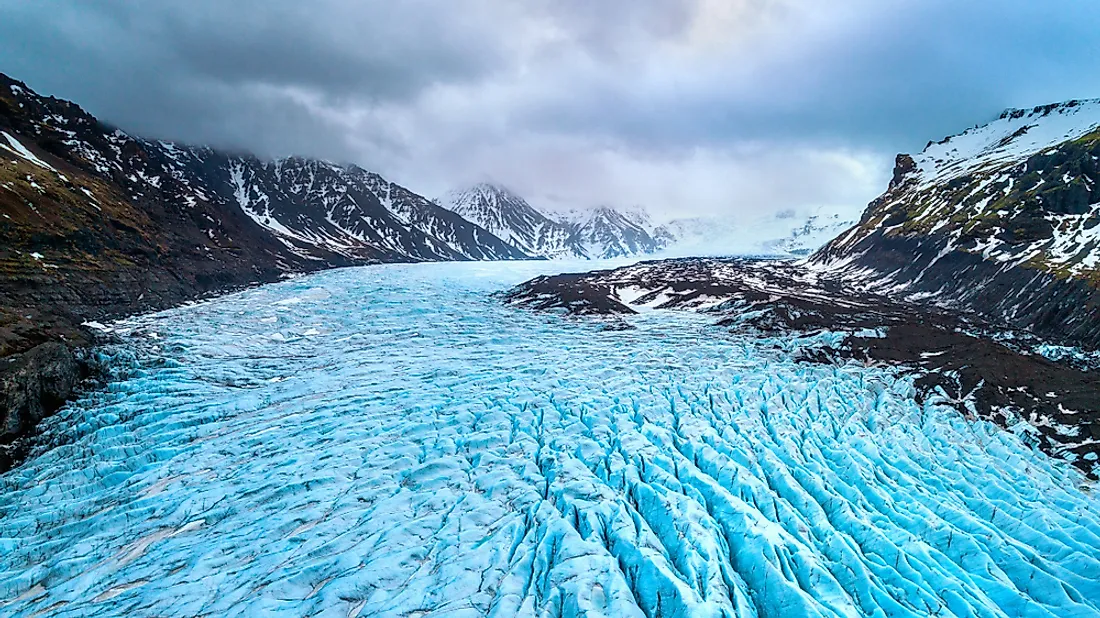What Is a Glacier?

Glaciers refer to the large accumulation of crystalline snow, ice, sediments, rocks, and more often water that originates from the land which moves down the slope with the impact of its weight and the gravity. The word glacier has roots from the French language which can be traced to the Vulgar Latin word glaciarium, the Late Latin word glacia, and the Latin word glacies, which means ice. The features and process caused by the glaciers are known as glacial, while the process of growth and establishment of the glaciers and their flow is known as glaciation. The study of glaciers, their features, and other processes related to glaciers are known as glaciology.
Formation of Glaciers
Glaciers are formed when the accumulation of ice and snow exceed the oblation (sublimation and melting) and typically originate from a landform known as cirque or the corrie, which is a geological feature with the appearance of an armchair, for instance in a depression in a mountain enclosed by aretes.
The snow collects, and the weight of the snow compresses the snow on the bottom to form neve. As more and more snow falls, the air from the snowflakes below is squeezed out to form glacial ice. The glacial ice fills up the cirque, and then it starts to overflow through any geological vacancy or weakness; such outlets could be a gap between two mountains. When the mass of the ice and snow are adequately thick, it starts to move as a result of the combination of the pressure, gravity, and the surface slope.
Glaciers ordinarily form when the average annual temperature is close to the freezing point and when the precipitation in winter results in significant accumulation of snow. They are also formed when the temperatures throughout the year do not result in the complete loss of the previous winter accumulation of snow.
Where Glaciers Are Found
About 99% of the world’s glaciers consists of the massive ice sheets, commonly known as the continental glaciers in the polar regions. Glaciers coverage is approximately 10% of the surface of the earth, and the continental glaciers extend to cover an area of 5x106 square miles and have an average thickness of 7,000 feet. Patagonia and Greenland also have significant continental glaciers.
Other glaciers are located in different mountain ranges in all the continents including Oceania in Papua New Guinea and New Zealand. Other regions include the Rocky Mountains, the Andes, the Himalayas, and a few areas in Mexico, East Africa, Zard Kuh in Iran, and New Guinea.
Glaciers are the world’s largest freshwater reservoir, and several glaciers form the seasonal polar, alpine, and temperate climates that store water as ice during the cold season and release them during warmer seasons as meltwater.
Interesting Fact About Glaciers
Glaciers store of approximately 75% of the fresh water in the world. In the last Ice Age at the maximum point, glaciers covered approximately 32% of the earth’s surface.
Between the 17th and the 19th centuries, the world experienced relatively cold temperatures, and glaciers advanced in many areas across the world, which has been referred to as the Little Ice Age.
In the US, glaciers cover more than 30,000 square miles with most glaciers in Alaska.
If all the land ice were to melt, the sea levels would increase by 230 feet all around the world.











